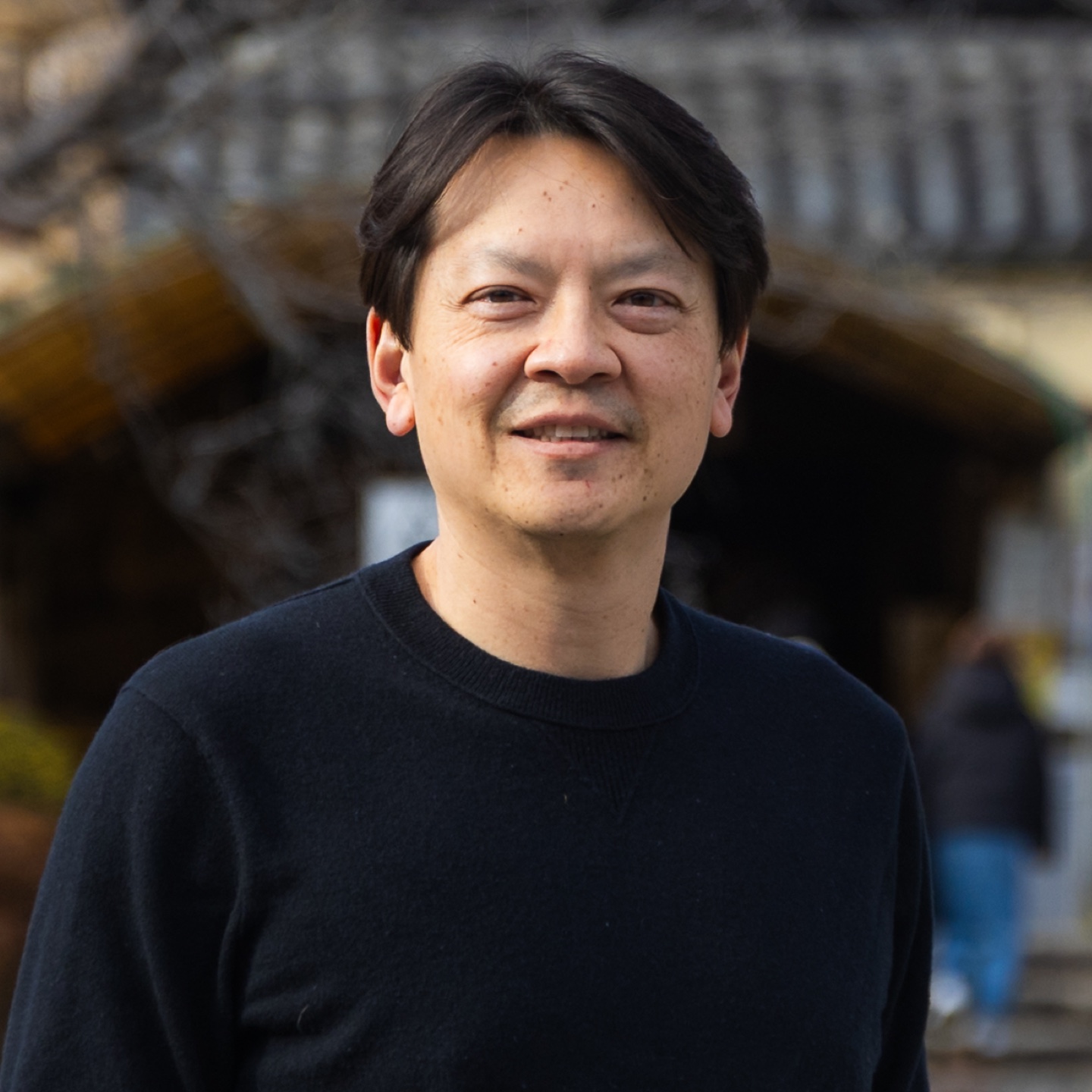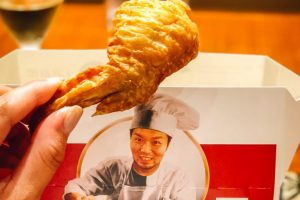Serving up creative interpretations of Kaiseki ryori, Den Restaurant Tokyo has been rising through the ranks of the world’s best restaurants landing at number 17 for 2018.
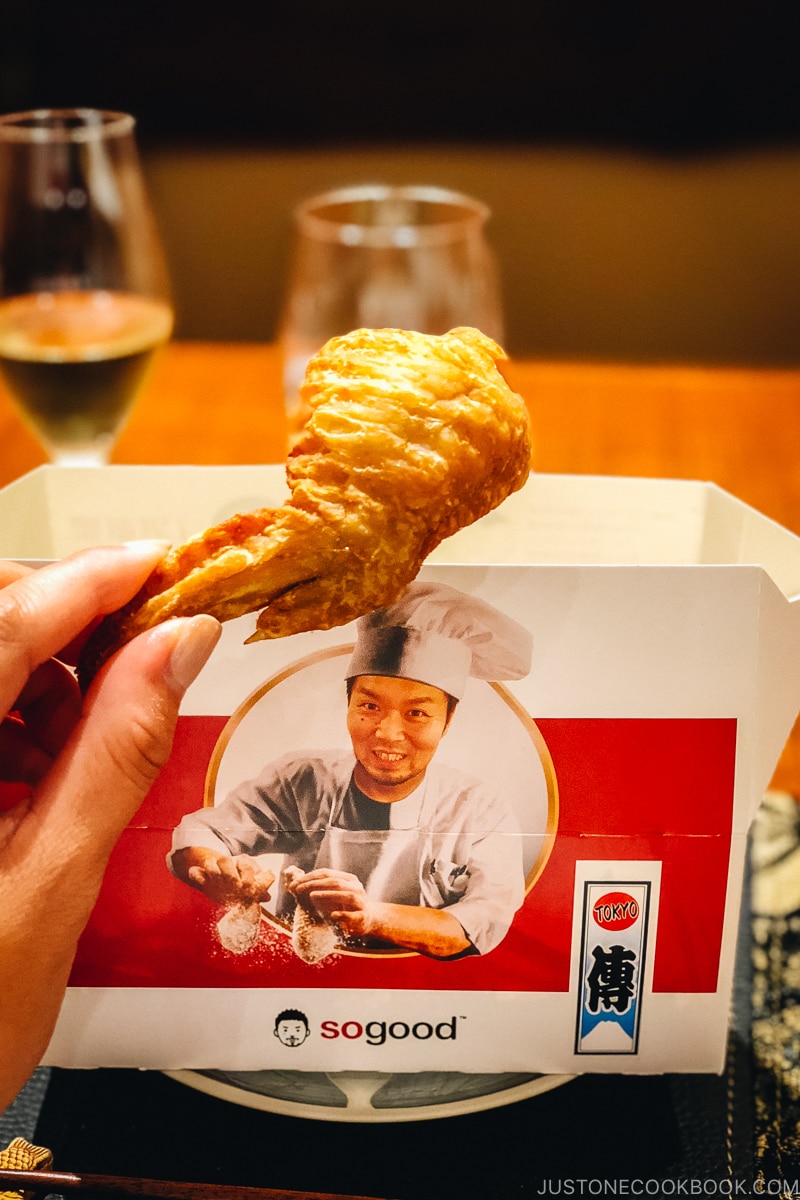
This past summer while in Japan, Nami and I treated ourselves to a delightful meal at Den Restaurant Tokyo. Our friends had told us about the creative Kaiseki ryori by chef Zaiyu Hasegawa and we also saw Den featured on David Chang’s Ugly Delicious Fried Chicken episode. Since Den is really popular, we booked our table one and a half months in advance. After confirming our reservation, we slowly counted down the days until we can enjoy our meal there.
Where is Den Restaurant Tokyo?
Den used to be located in Jimbocho (神田神保町) area of Tokyo (formerly known as Jimbocho Den) for 9 years and the current location is at Jingumae (明治神宮前), halfway between Japan National Stadium and Harajuku. The exterior of the restaurant is unassuming, one would never have guessed such a renowned restaurant was in there.
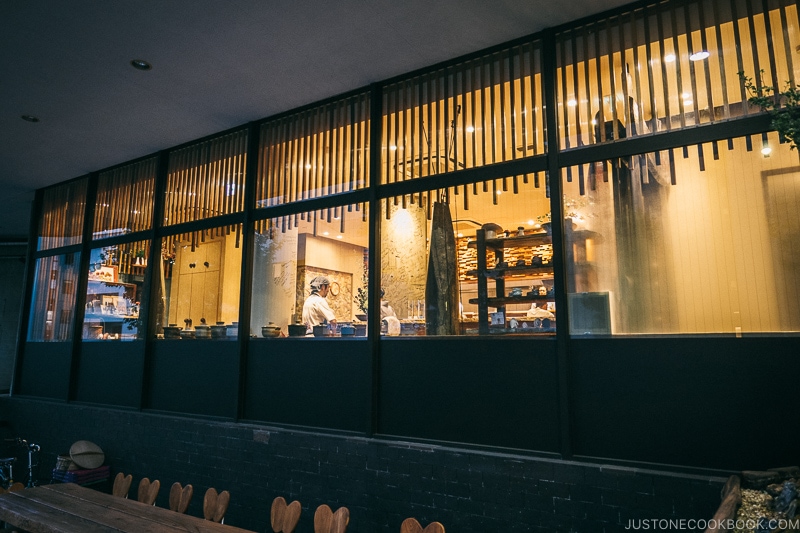
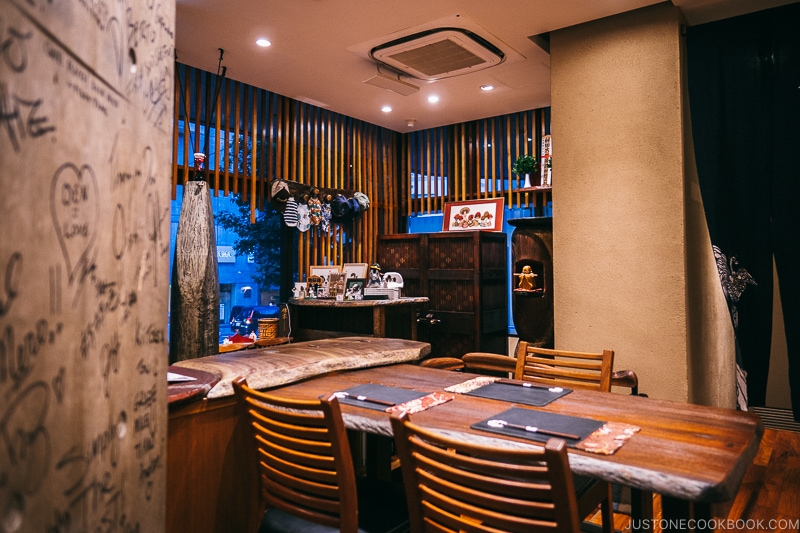
As we entered, we noticed the plentiful use of wood all over the restaurant. The atmosphere was homely and relaxed, a reminiscent of the Japanese countryside. Chef Hasegawa wanted to create a “Japanese Trattoria”, welcoming his guest with warmth and great food. Unlike the majority of fine dining restaurants, the interior was brightly lit and there were cute decorations all over different corners.
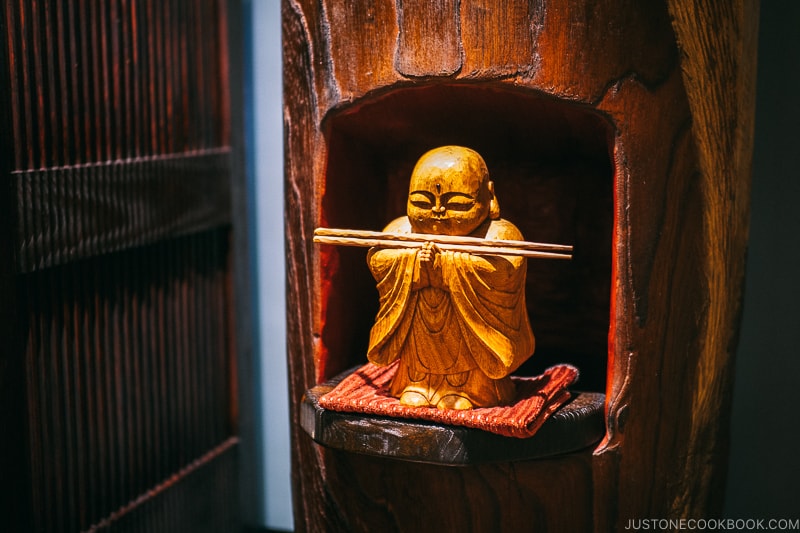
We were greeted by a smiling host who ushered us to our counter table seating. Den Restaurant Tokyo doesn’t seat many people, there are 3 small tables, a semi-private room, and counter seating for about 8 people.
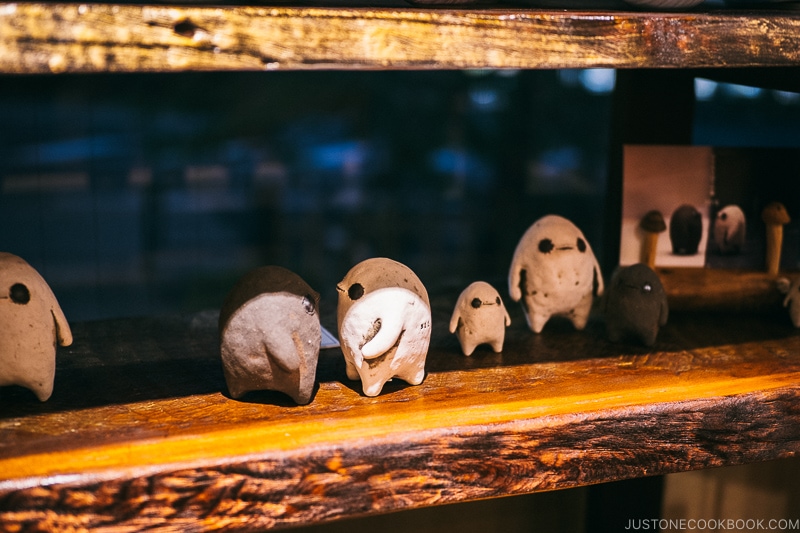
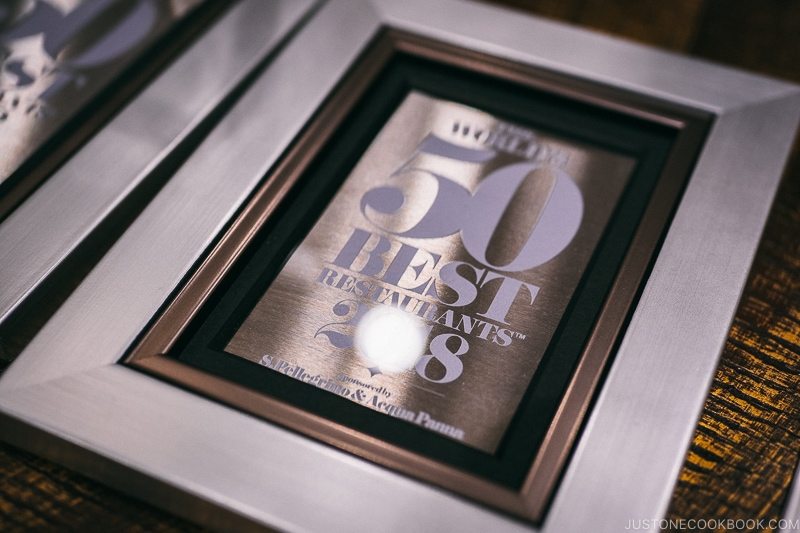
The Exquisite Meal at Den Restaurant Tokyo
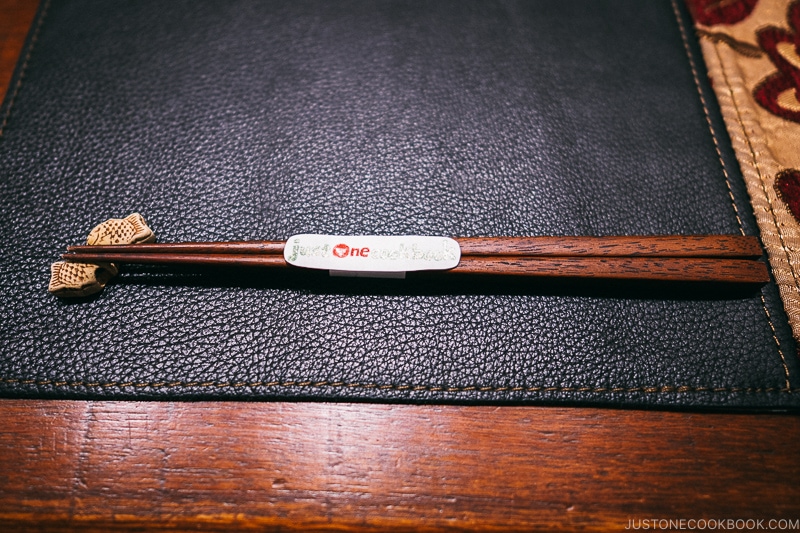
After sitting down, we spotted our chopsticks with personalized Just One Cookbook wrappers. So thoughtful! The meal started with a welcome glass of bubbly.
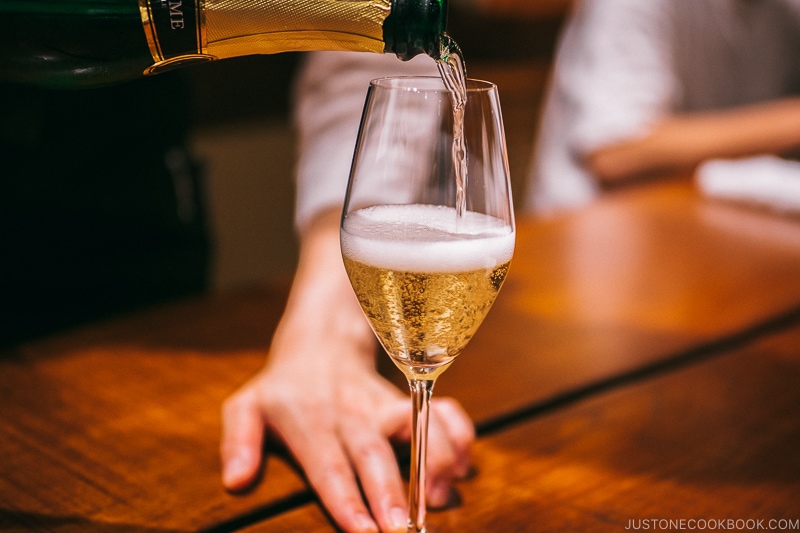
It didn’t take us long to observe that the staff at the restaurant including the ones in the kitchen constantly had a smile on their face. The cheery mood was genuine and infectious. As diners, we felt like we were in good company right away! There is no menu at Den Restaurant Tokyo (I was able to ask Den to email me our dishes after the meal), so the entire meal was a surprise.
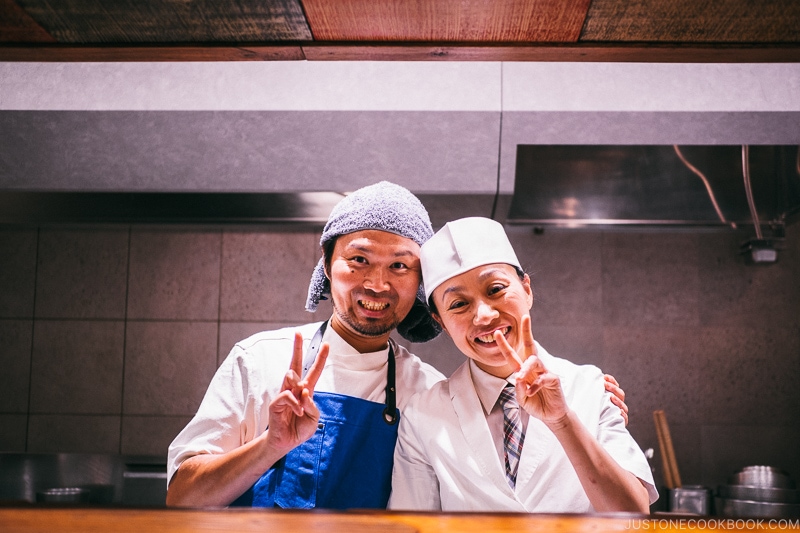
Kaiseki at Den Restaurant Tokyo
So what type of food does Den serve? It’s Japanese Kaiseki (traditional multi-course Japanese dinner), but with a modern twist. In Japan, you can enjoy Kaiseki in specialty restaurants or ryokan stays.
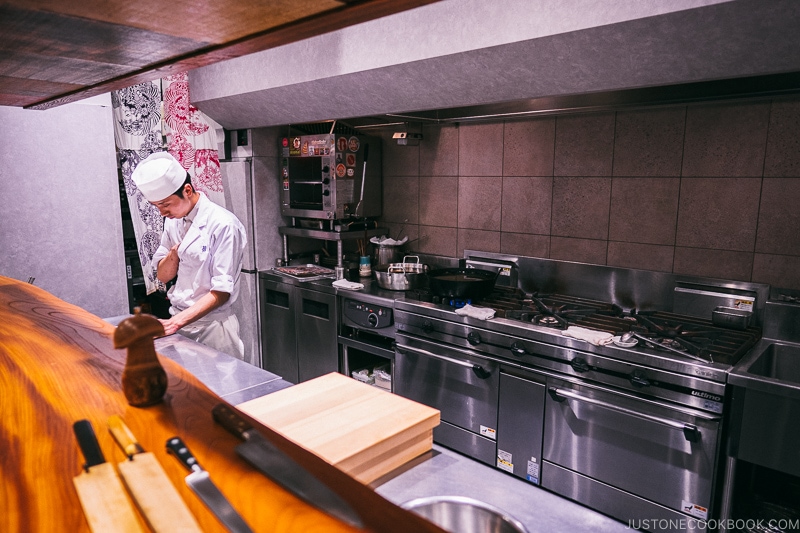
Chef Hasegawa always serves monaka as the first course to his guests. The monaka (a traditional Japanese sweet) was presented in a Den package. At first bite, we were blown away by the flavors at once. The sweet was stuffed with white miso marinated foie gras, Japanese plum jam and pickled daikon (daikon pickled in salted rice yeast). It was rich and buttery from the foie gras, yet the plum jam and daikon cut through the fat and showcased their refined sweet and sour flavors. What a remarkable combination!
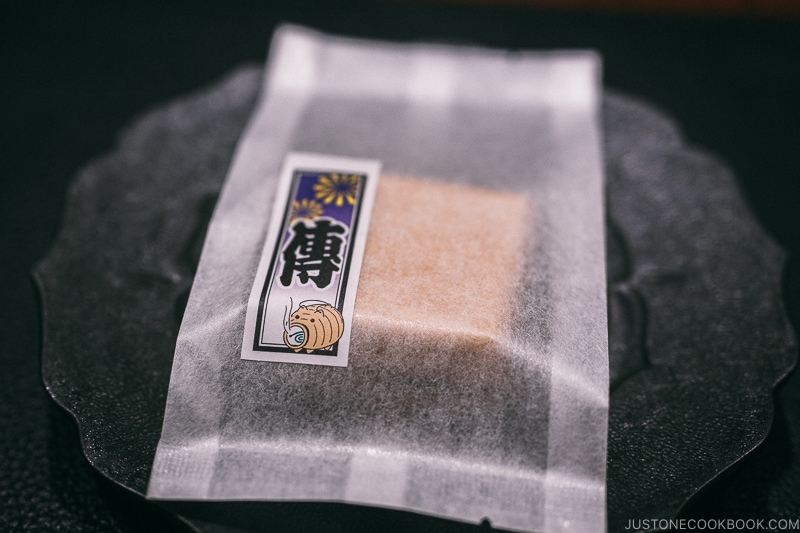
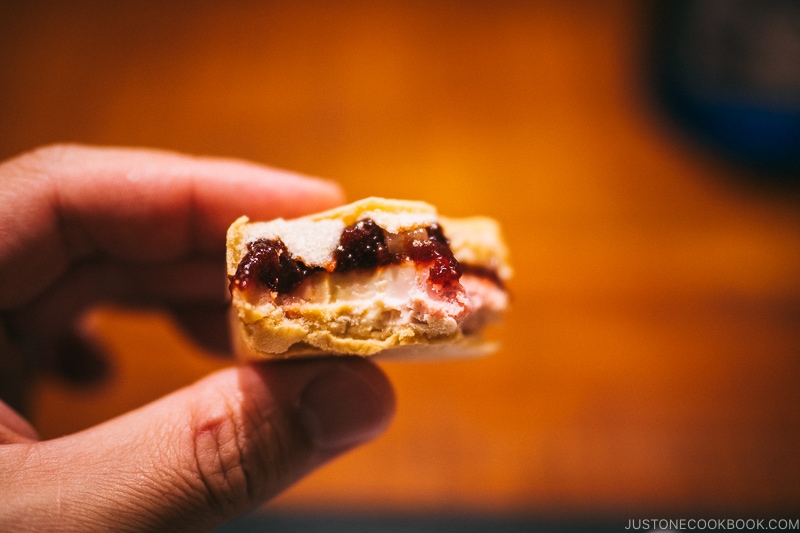
The next dish was the corn and tofu skin in béchamel sauce. The strong corn flavor matched wonderfully well with the soft tofu skin in a rich white sauce. The soup was warm and tender. A good follow up for the dry monaka to moisten our throats.
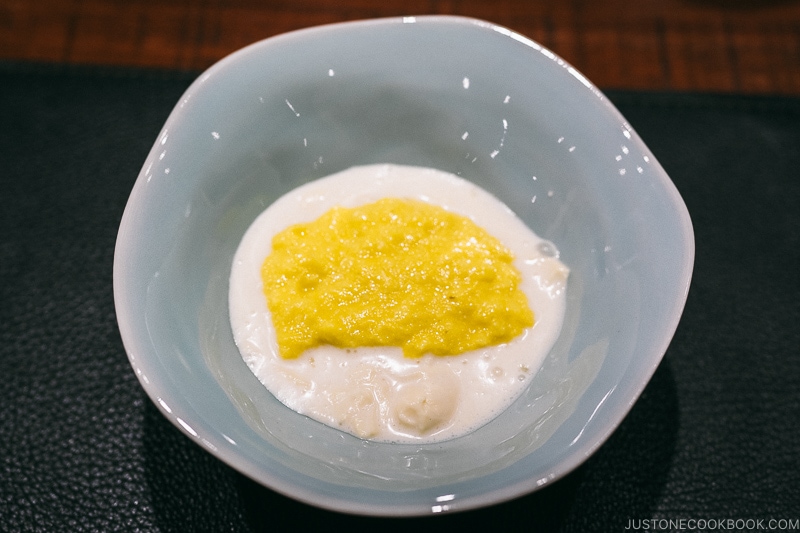
Den Fried Chicken – Dentucky
Following the soup was a fried dish, and it’s the signature Den Fried Chicken! Served in a box that mimics KFC’s packing, it featured the likable face of chef Zaiyu Hasegawa, smiling animatedly with two plump drumsticks in his hands.
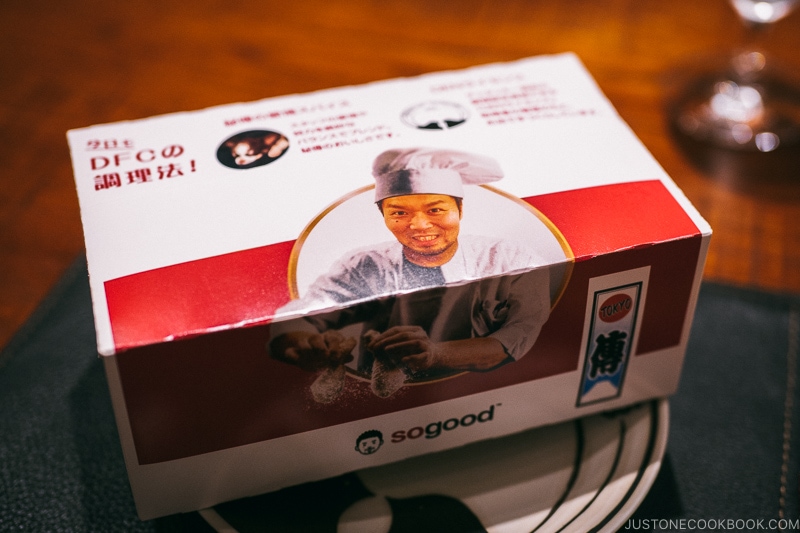
However, the similarity ends there. Instead of a box of greasy fried chicken and biscuits, there was a chicken wing buried in bright green herbs and a mini American flag (Japanese flag for Nami’s box).
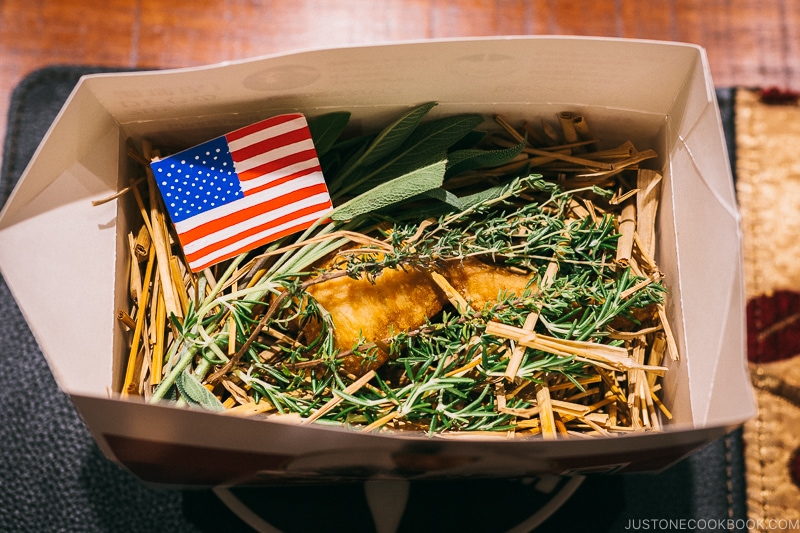
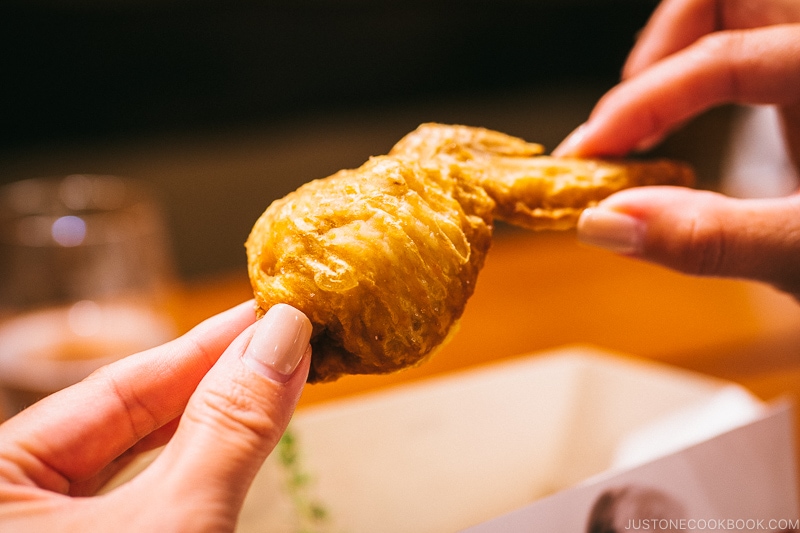
This dish was inspired by Korean chicken ginseng soup, in the fried form. The chicken wing was stuffed with seasoned Japanese sticky rice, turmeric, raisin, and almond. It was perfectly fried. Perfectly finger licking good! The seasoned crispy chicken skin wrapped around tender rice, with a bit of sweetness from the raisin and a flavor boost from the aromatic golden turmeric. Why did it only include one wing?!!
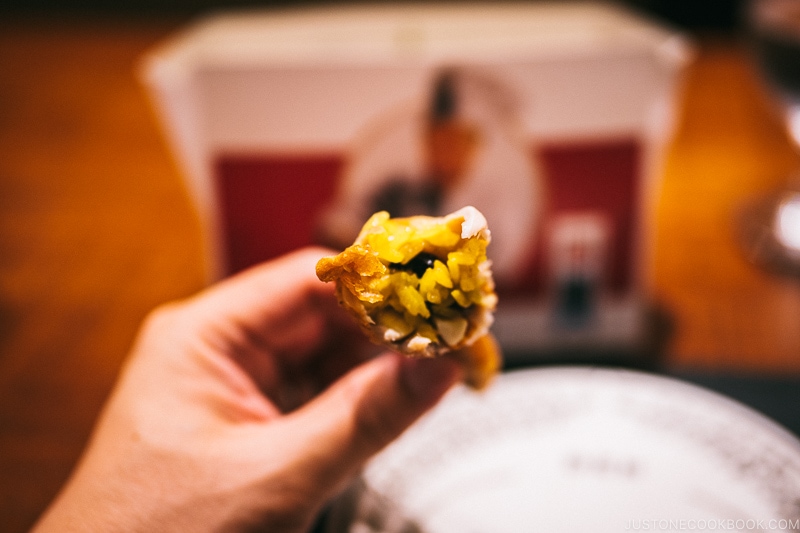
After the fried chicken came the 5-day aged Japanese bluefish (Bigeye or called Kuromutsu) marinated with soy sauce and served with freshly grated wasabi. The bluefish was refreshing yet came with a depth of flavor.
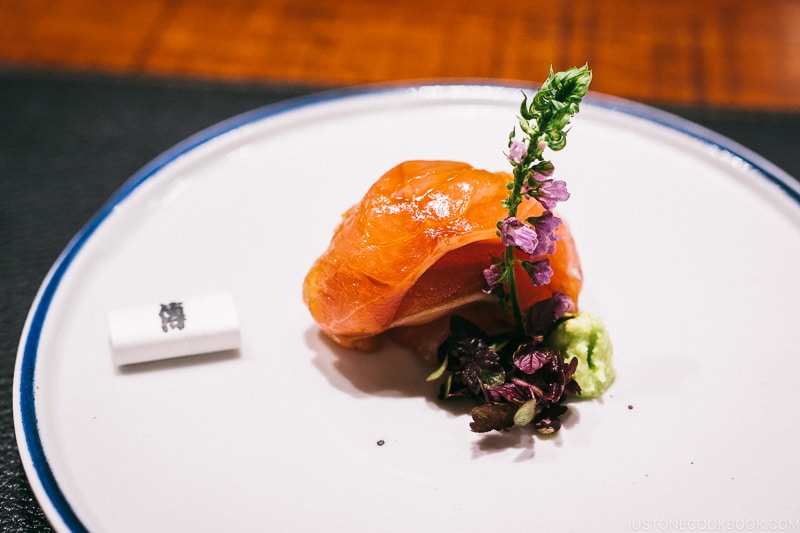
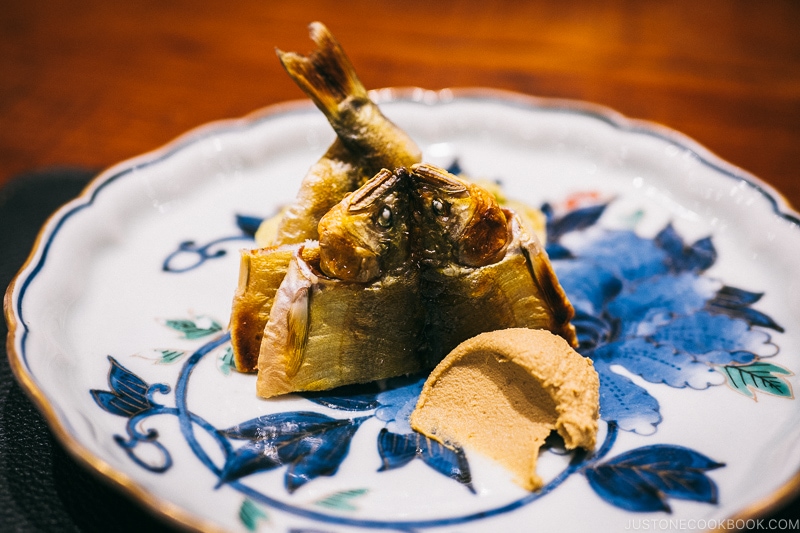
Following the sashimi was another seafood dish, ayu fish. Ayu is a popular fish served as part of kaiseki but typically just salted and grilled. At Den Restaurant Tokyo, the fish is served dried with its liver paste and rice bread colored with smartweed. The liver paste was rich like foie gras and complemented perfectly with the dried ayu and rice bread (meant to imitate baguette).
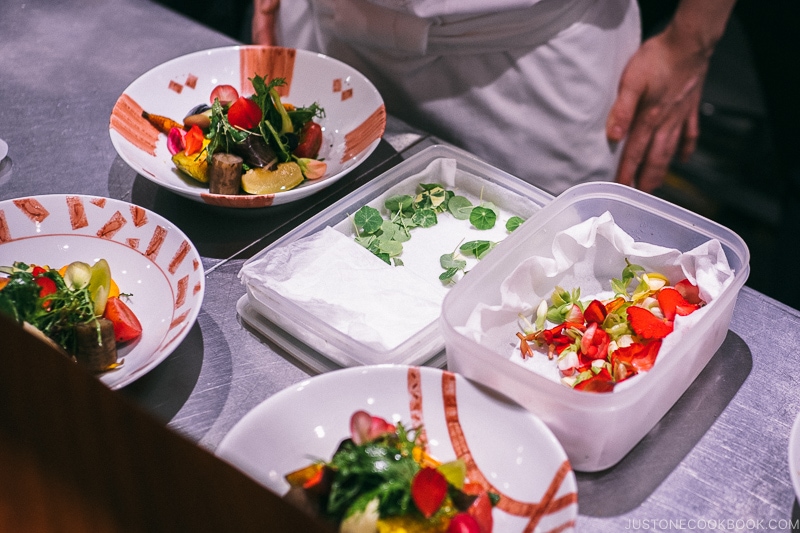
Den Signature Salad
Chef Hasegawa’s signature salad came from his drive to prepare Japanese vegetables in a way where the older generation of Japanese, who are not into salad will still appreciate and enjoy it thoroughly. It is made with more than 20 different kinds of vegetables and served in different preparations such as deep-fried, pickled, and grilled. Every morning as the vegetables are delivered directly from the farm, the chef then decides how each one should be prepared.
The salad is seasoned with just a bit of soy oil and shio-kombu. Without a doubt, it was one of our favorite dishes. We can taste each individual vegetable and altogether the combination just explodes!
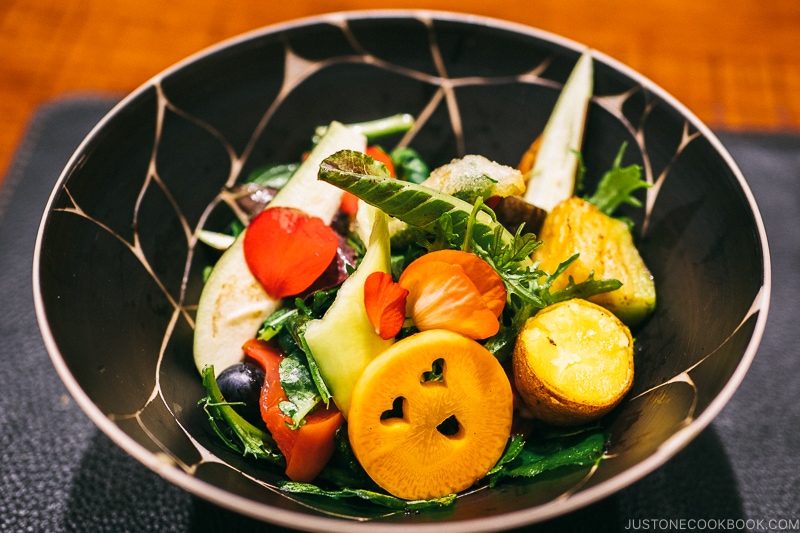
Following the signature salad, we were served with a soup made with beef sinew, wax gourd, and cloud ear mushroom. It was rich and tasty, but not too surprising.
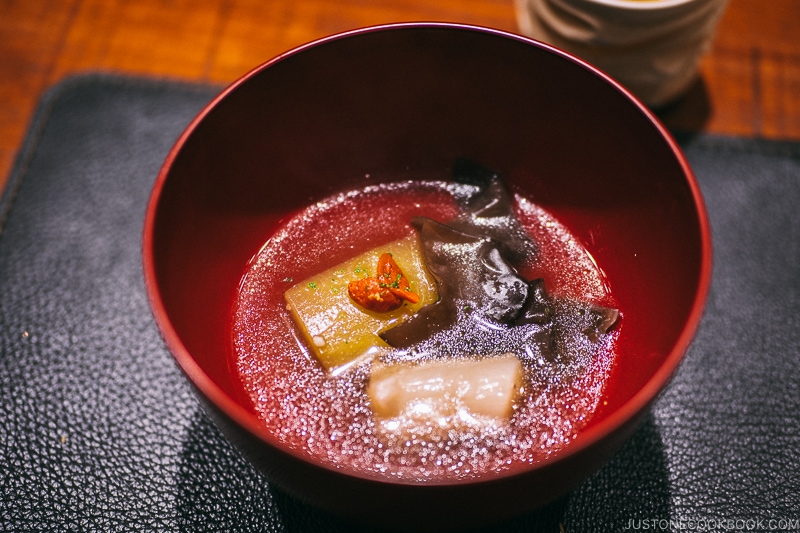
As for the main rice, there were two choices and we had one each. The first choice was whitebait rice (shirasu) and the second was deep fried conger eel served with pickles and miso soup。
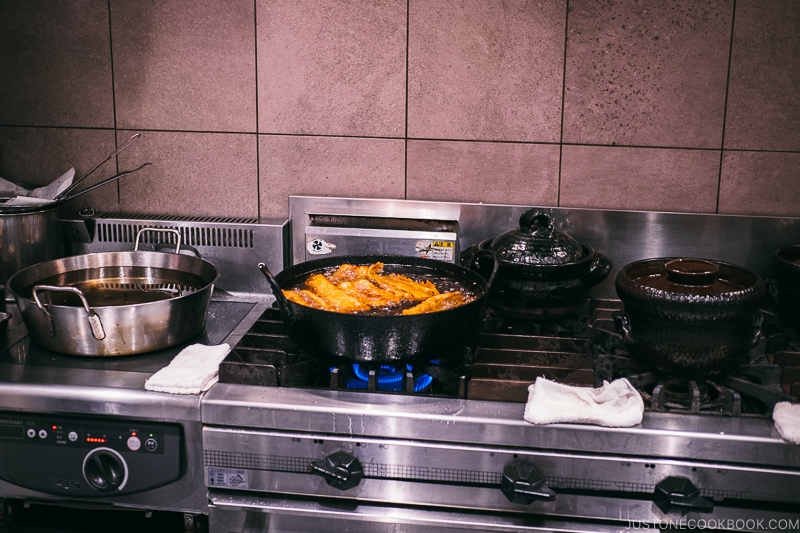
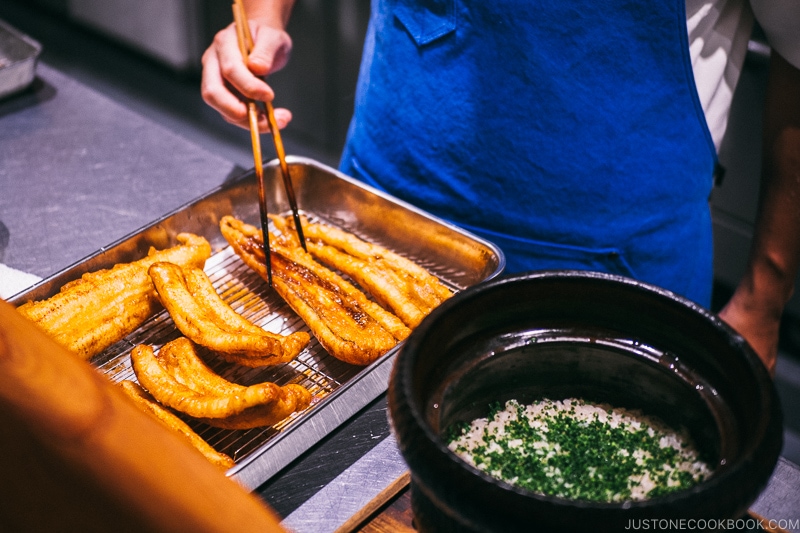
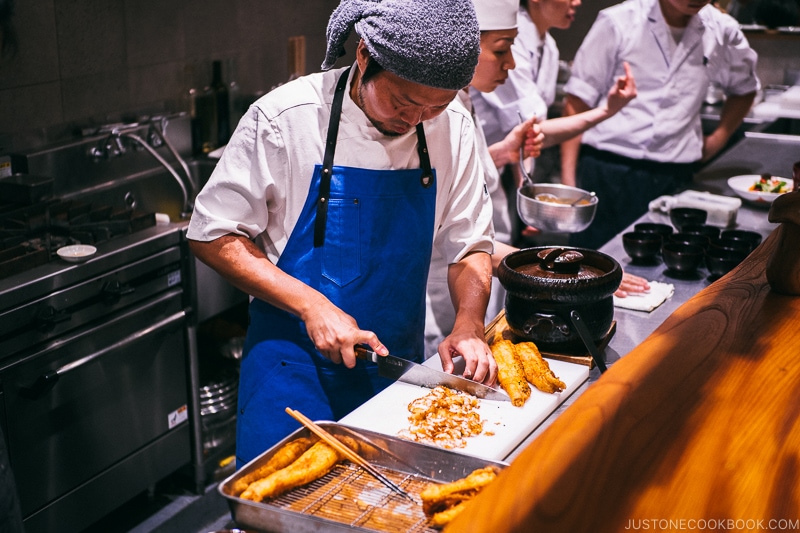
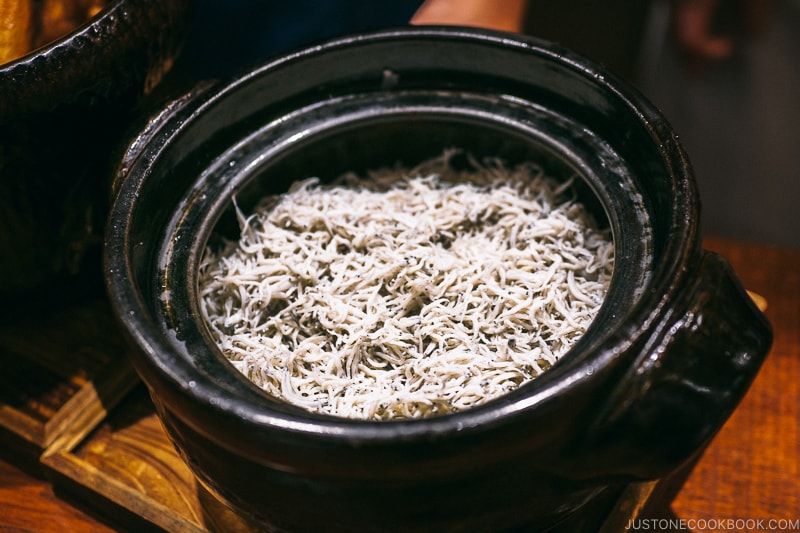
The shirasu rice was tender with just a hint of salt and tasted like a rice dish you’re enjoying next to the ocean breeze.
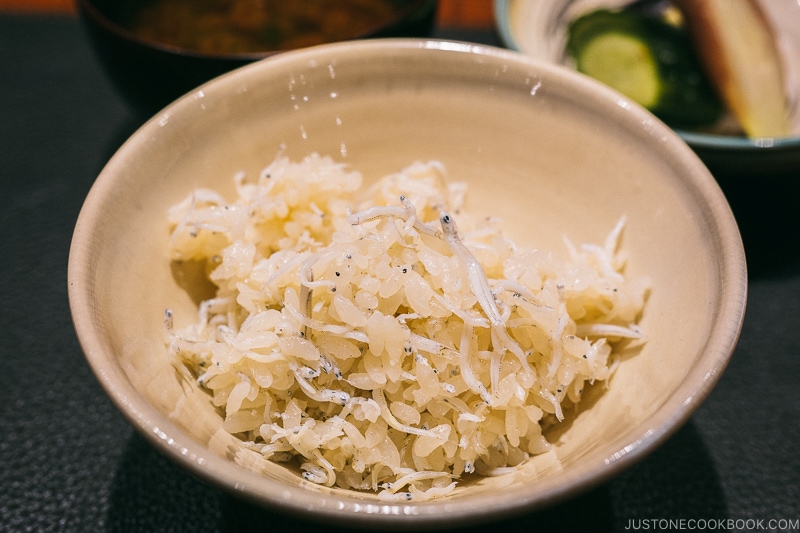
The eel rice was finished on high heat and had a nice burnt crust. The mixture of burnt rice and soft kernels, along with the crispy texture of the eel and soft meat, it was simply amazing. Definitely our favorite of the two.
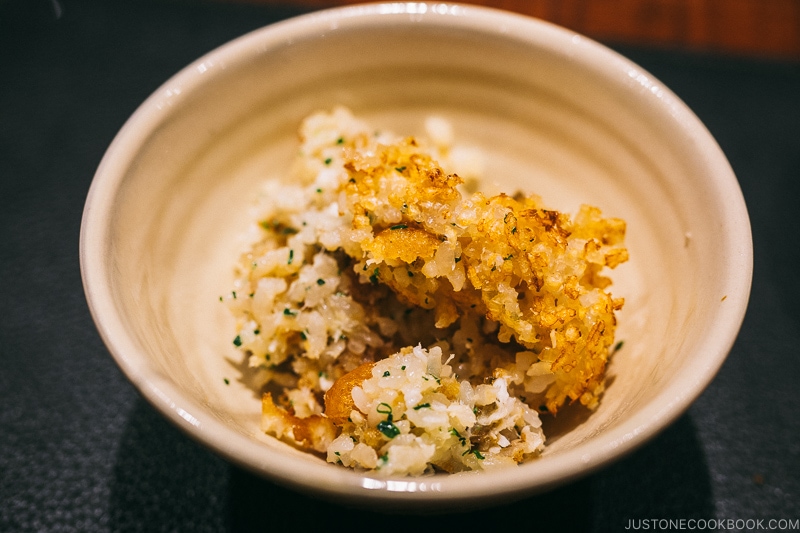
The final course for us at Den Restaurant Tokyo was a dessert concoction of rhubarb syrup, rum jelly, and amaretto Jelly. The combination was refreshing in the summer heat, and just enough sweetness to bring back the energy.
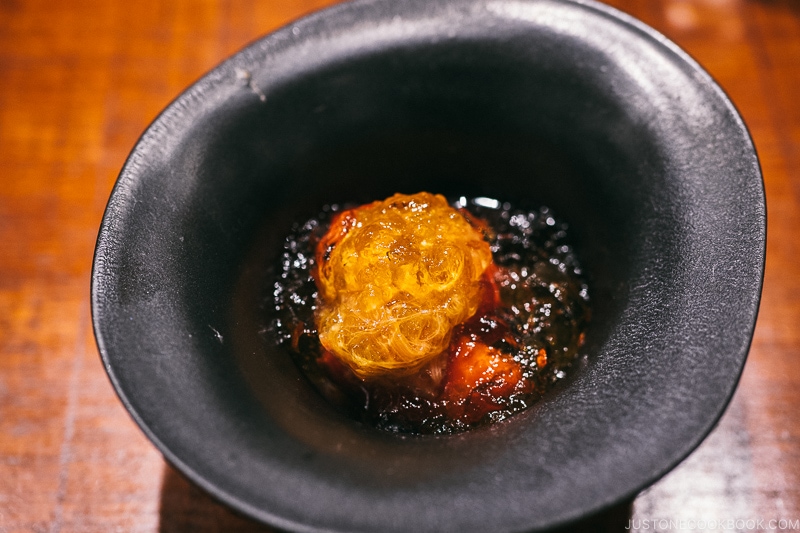
Japanese Sakes at Den
Since it was a Japanese meal, I asked the staff to recommend sake that would work well with the meal. All the sakes are quite good and their names are shown in the pictures below.
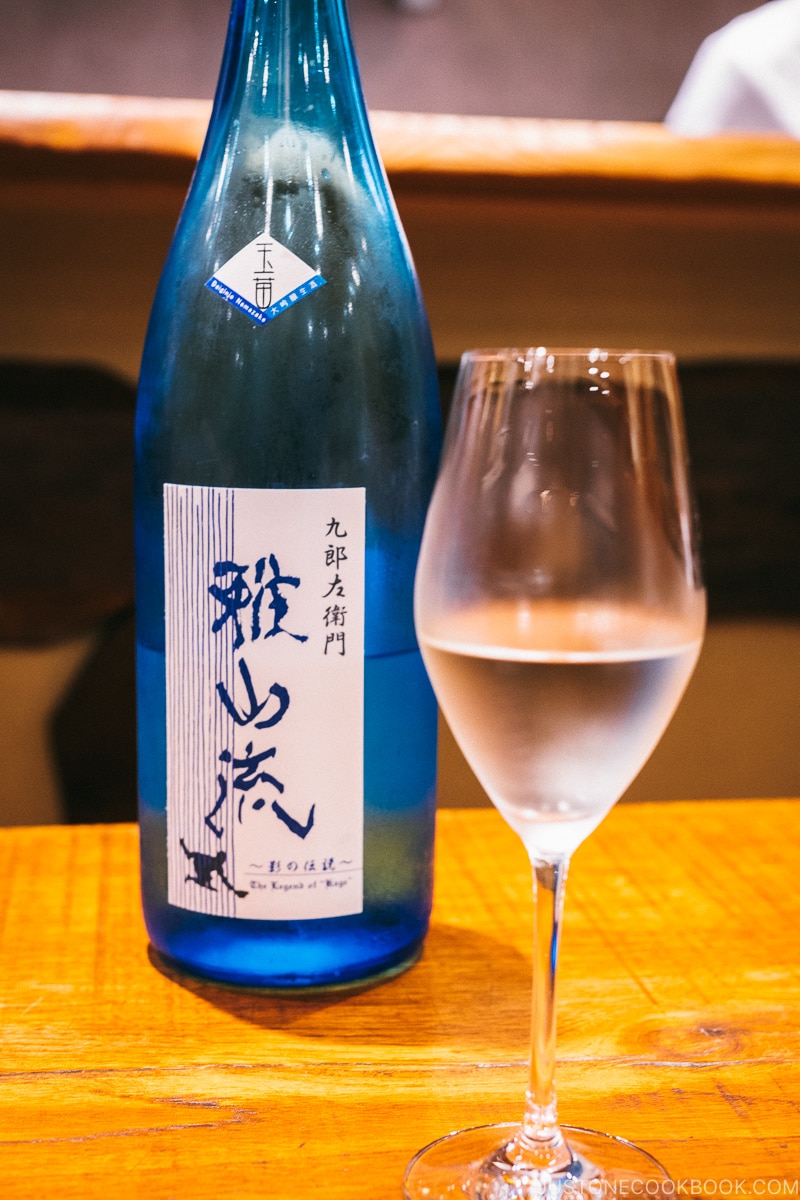
The second sake had an interesting approach for its label. By using a clear bottle, there is a fine artwork on the back of the label that can be seen through the glass. This summer sake by Abekan is meant to mimic a bowl of goldfish swimming in cool water, and help alleviate the summer heat of the drinkers.
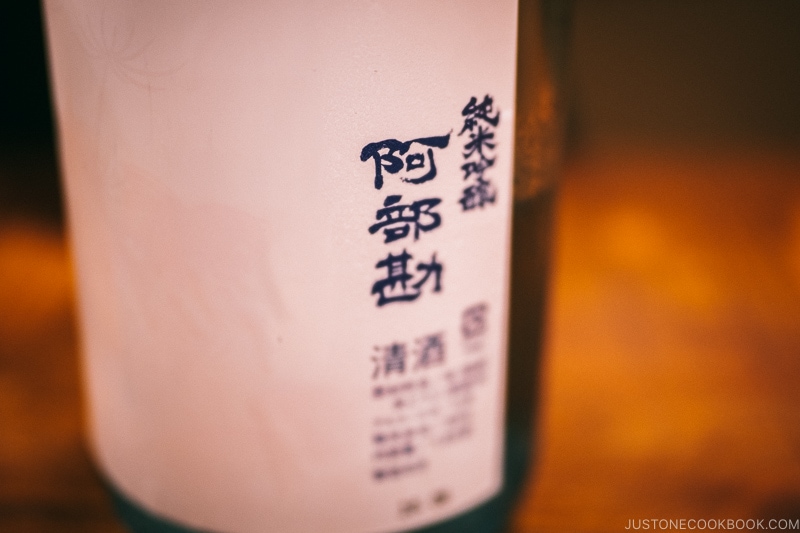
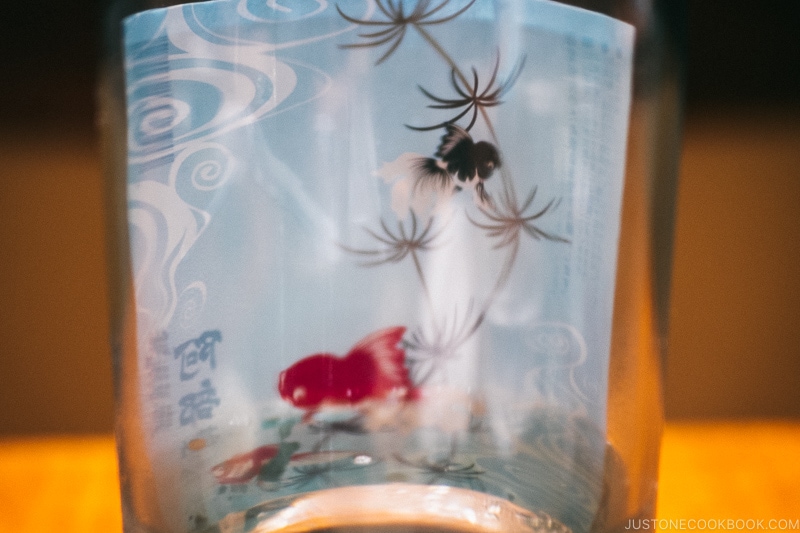
Thank you for eating at Den Restaurant Tokyo with us! It was a memorable meal, and we were touched by the heartfelt hospitality from the entire staff. Instead of just hiding in the kitchen, Chef Hasegawa greeted all his guests, took time to interact and made everyone feel welcome throughout the meal. We are so happy that he’s made Den his Japanese Trattoria.
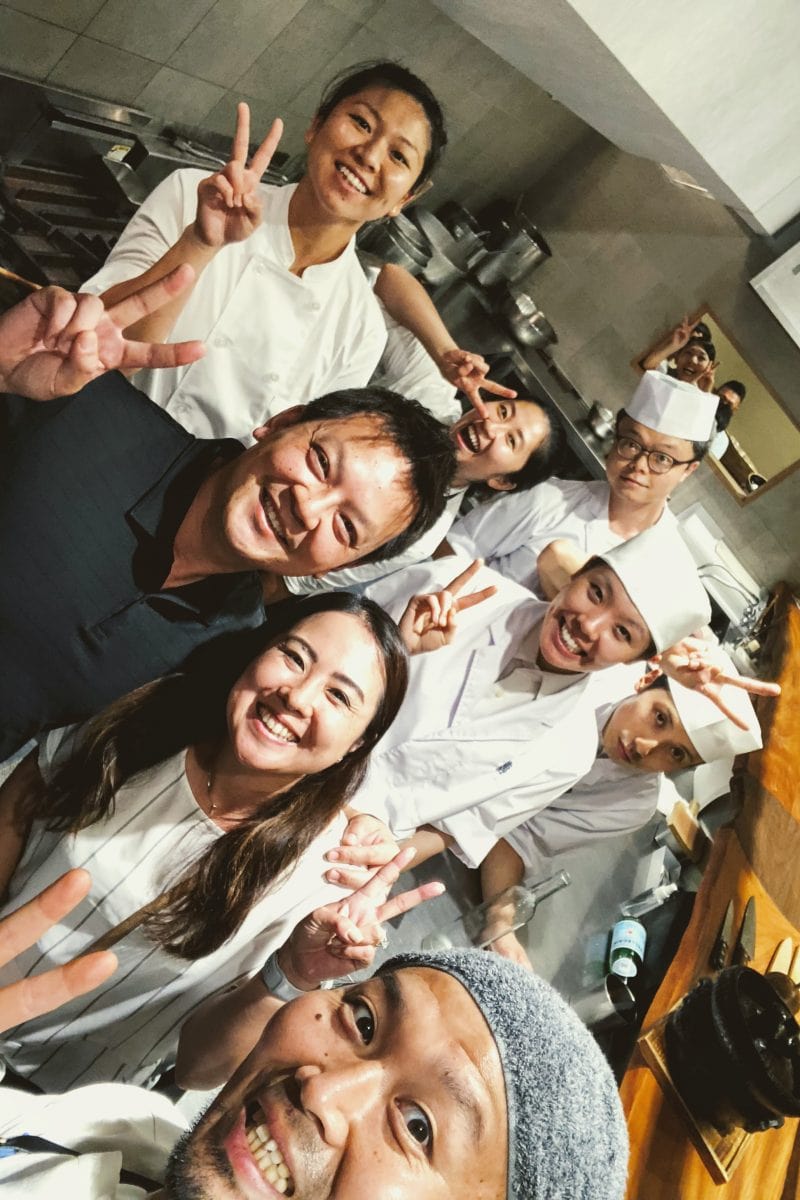
If you can’t make it to Den but would still like to understand how Chef Hasegawa creates his amazing dishes, we have a unique WORLDWIDE giveaway for JOC readers.
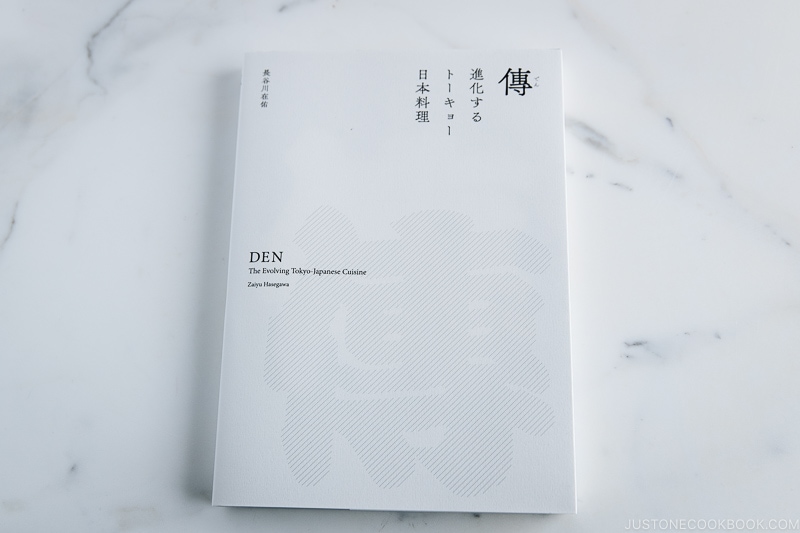
We are giving away a copy of the Den The Evolving Japanese Tokyo Cuisine cookbook we purchased at the restaurant. Head over to the giveaway page for more info.
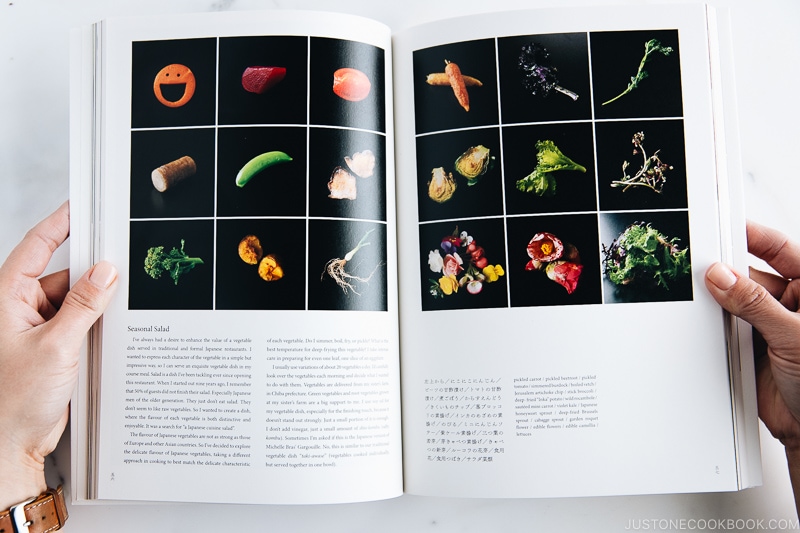
As always, thank you for reading and if you are interested in restaurants we love around the San Francisco Bay Area or Japan, find out what we really think in the restaurant review section. For travel in Japan, head over to the Japan travel guides and let us know if you have any questions. Happy eating!

